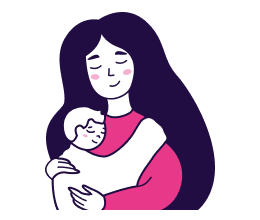What Is Term Life Insurance?
 Editorial Standards
Editorial Standards SmartFinancial Offers Unbiased, Fact-based Information. Our fact-checked articles are intended to educate insurance shoppers so they can make the right buying decisions. Learn More
Term life insurance is a relatively cheap and simple form of life insurance coverage that lasts for a predetermined amount of time, like 10, 20 or 30 years. It differs from whole life insurance which is more expensive and lasts until you die. You can add riders to your policy, tailoring it to your needs. You can also get your premium payments reimbursed if you have a return of premium rider should you outlive your policy's term. Below is a comprehensive look at what term life insurance is, including the types of term life insurance, how much of it you should buy and the benefits of term life coverage.
How Term Life Insurance Works
Term life insurance offers what's known as a payout, also called a death benefit, should you pass away before the term ends. These terms traditionally last 10 years, 20 years, or 30 years. The death benefit cannot be paid out until a claim has been filed with the insurance company. There is no time limit governing when you have to file a claim, allowing loved ones time to grieve. However, there are costs associated with someone dying so it is best to file a claim as soon as possible to help cover any afterlife expenses such as medical bills, funeral costs, etc.
There are multiple payout options to choose from as well:
-
Lump sum: A lump sum gives the entirety of the payout to your beneficiaries all at once. It is the simplest of the pay structures. It gives your loved ones the immediate ability to use the money for whatever they need.
-
Installments: Installments pay out your death benefit to your loved ones over a set amount of time. This could be monthly, quarterly or yearly. Keep your loved ones' expenses in mind when determining payment installments.
-
Interest: If the payout stays with the insurance company, they will invest it and pay your family the accumulated interest. The insurance company has the final say in where your payout is invested.
Types of Term Life Insurance
Level term: Level term life insurance refers to a life insurance policy that gives the same amount of payout regardless of when the policyholder dies. Grading is not applied. Grading refers to smaller payouts given to beneficiaries should the insured pass away shortly after buying a new policy. Most level terms also have level premiums. This means the premium amounts won't change either.
Yearly renewable term (YRT): This type of term life insurance policy must be renewed every year. It is sometimes seen as favorable as the initial cost is relatively small. However, premiums rise with each renewal due to age as an older person is considered a higher risk. This means a YRT would cost more in the long-run.
Decreasing term: This refers to a term life insurance wherein the payout lessons over time. The draw to this policy is that it often has lower rates meaning you pay less.
What Are the Benefits of Term Life Insurance?
Term life insurance is meant to give you the greatest amount of protection typically at a low cost. This makes it an ideal form of life insurance for young families. It's more accessible with a substantial amount of protection. A $100,000 term policy, for example, may cost a 30-year-old around $200 a year. Due to the savings component of a whole life policy, that same $200 may only buy about $14,000 of coverage. That "savings" refers to money paid into your "cash value" every time you make a payment.
How Much Term Life Insurance Do I Need?
How much term life insurance you need depends on your family. Your policy should be anywhere between seven to 12 times your annual salary. For example, someone who makes $60,000 a year may want to take out an insurance policy with a $420,000 payout to a $720,000 payout. Take a few minutes and think about the average expenditures your family has. This could include groceries, utilities, mortgage payments or rent, vehicle payments, personal loans, credit cards, medical bills and other insurance like home insurance, health insurance or auto insurance. Make sure you don't underestimate the needs of your family. One in three insured people says they don't have enough coverage.
What Is the Difference Between Term Life and Whole Life Insurance?
The first major difference between term life insurance and whole life insurance is the duration of the coverage. Term life only lasts a set period of time, or term, before it expires or renews. Whole life remains until your death unless you decide to cancel your policy. The second major difference is the cost. Term life insurance costs less than whole life insurance. However, term life insurance premiums can change over time depending on your age and health. In fact, your premium will likely rise every time you renew. Whole life insurance remains at a steady rate for the duration of the policyholder's life. The premium may be initially higher than term life insurance, but it won't go higher.
Term life insurance is designed to make sure your beneficiaries are financially secure after you're gone, perhaps for a time frame while there are dependents. Whole life insurance, also called "cash value insurance," is also designed to make sure your beneficiaries are financially secure but policies earn interest and a cash value, which will not be paid out to your loved ones when you have passed away without a rider that some insurance companies offer at an additional price.
Without a rider, the interest earned on the policy stays with the insurance company. While the policyholder is alive, however, they can access it by making withdrawals, trading out the death benefit for the cash value, taking out a loan against the value, or applying the cash value to premiums. Remember, taking out a loan means you will have to repay that loan with interest. Make sure you contact your insurance company so you clearly understand what your options are concerning your cash value should you buy a whole life insurance policy.
What Riders Are Available With Term Life Insurance?
A rider refers to an extra benefit you can add to your insurance policy. Though there are some free riders, you will typically need to pay more to add a rider to your policy. Below is a list of riders you can add to your term life insurance policy.
Accelerated Death Benefit Rider
This living benefit allows a preemptive payout to those who are diagnosed with a terminal illness. The payout is meant to help deal with medical expenses and is paid from the death benefit.
Accidental Death Benefit
This rider allows for a higher payout should you die from an accident. The amount can be two times higher than the original policy.
Child Term Rider
This rider helps cover the costs associated with the death of a child. Most insurance companies offer coverage from $15,000 to $20,000. Furthermore, all adoptions and additional births are automatically covered.
Disability Waiver of Premium Rider
This rider enables you to forgo paying your monthly premium should an accident render you incapable of working for a period of time. Each insurance company designates the length of the waiver and the age limit for the rider.
Guaranteed Insurability Rider
This rider allows the insured guaranteed additional coverage should they require it. In other words, the insurance cannot deny your additional coverage due to age or health.
Return-of-Premium Rider
This rider allows the insured to get their premiums reimbursed should they outlast the term of their insurance.
Do You Get Your Money Back at the End of a Term Life Insurance Policy?
There is a way you can get money back at the end of your term life insurance policy. The best way to do this is with a return-of-premium rider. This allows you to recover the premiums you pay should you still be alive when the term ends. The caveat to this is your premiums will go up if you choose this rider. A man in his thirties with no health conditions can pay up to 30% more in premiums.
Keep in mind that an insurance company is required to reimburse your payments should you cancel your policy within 30 days of purchase. This includes any prepaid premiums.
Get Covered
Term life insurance offers low rate coverage that lasts for a set period of time or term. With its various riders and types, term life insurance is simple and customizable. The biggest difference between term life insurance and whole life insurance is the cost. Term life insurance is cheaper but it does not have a cash value. Whole life charges extra as it uses some of your monthly premium to pay into cash value, which you can tap into, withdrawing money when you want. Keep in mind you can be reimbursed for the money you've paid towards your insurance if you've outlived your policy's term provided you have a return-of-premium rider, which can raise your rates significantly.
Shopping around will help you find the most affordable life insurance policy. Enter your zip code below and fill out a quick questionnaire, and within minutes SmartFinancial will send you free quotes for the lowest rates in your area.
- Insurance quotes /
- Life /
- Term Life Insurance






